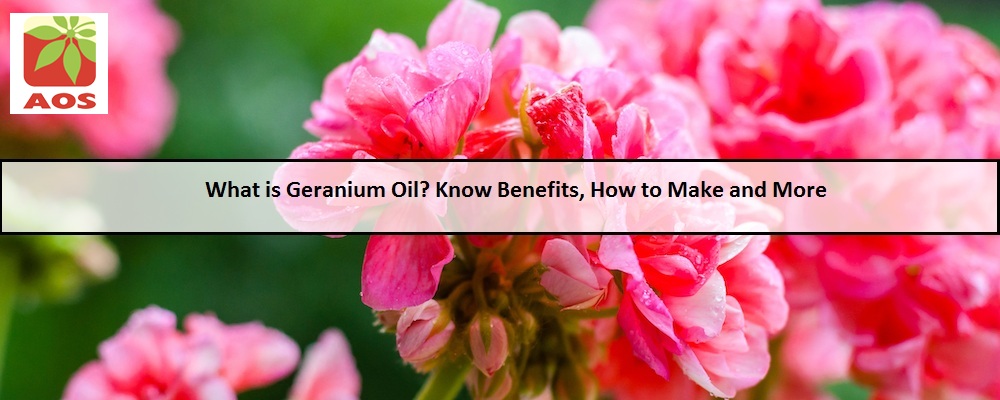
What is Geranium Oil? Know Benefits, How to Make and More
The geranium plant's branches, leaves, and flowers are used to make geranium oil, which is considered harmless and prized for its healing abilities. Geranium oil has a wealth of antibacterial, antimicrobial, and antiseptic qualities that promote wound healing and reduce skin inflammation.
Varieties of Geranium oil?
GERANIUM ESSENTIAL OIL (BOURBON)
GERANIUM ESSENTIAL OIL (EGYPTIAN)
ROSE GERANIUM ORGANIC ESSENTIAL OIL
ROSE GERANIUM SOUTH AFRICAN ESSENTIAL OIL
How to Make Geranium Oil?
You may create geranium oil at home if you have a few weeks to spare:
1. 12 ounces of rose geranium leaves should be snipped off the plant.
2. Put the leaves in about the halfway full layer of olive or sesame oil in a small, transparent glass container.
3. For a week, securely cap the jar and set it on a sunny windowsill.
4. To transfer the oil to another glass jar, strain it with cheesecloth. Dispatch the geranium leaves.
5. More fresh geranium leaves can be added to the oil.
6. For a week, tightly close the new jar and place it once more on a sunny windowsill.
7. For an extra three weeks, repeat these actions each week (total of five weeks).
8. Fill a bottle that can be kept firmly closed with the essential oil. Use it within a year and store it somewhere cold and dry.
How to Check Purity of Geranium Oil?
Put one drop of an essential oil on some paper and wait for 30 to 45 minutes to see whether it is pure. After the product has dried, if you see an oil or grease ring, it can be a sign of an unclean product.
Benefits of Geranium Oil and How to Use?
Linalool, Geranyl formate, Citronellol, and Geraniol are the primary chemical components of geranium essential oil.
1. The following behavior is said to be displayed by LINALOOOL:
Sedative
Anti-inflammatory
Anti-depressant
Analgesic
Anti-epileptic
Anti-anxiety
2. The following activity is thought to be exhibited by GERANYL FORMATE:
Hepatoprotective Aromatic Antifungal (fresh, green, floral, fruity)
3. It is thought that CITRONELLOL engages in the following activity:
Anti-viral
Anti-pasmodic
Anti-oxidant
Anti-convulsant
Sedative
Anti-microbial
Anti-inflammatory
Anti-fungal
4. The following behavior is thought to be displayed by GERANIOL:
Anti-bacterial
Analgesic
Anti-oxidant
Anti-septic
How to Use?
When used directly to the skin, geranium essential oil can be diluted with a carrier oil, such as sesame oil. It may be applied topically to treat rashes or acne, or it can be used as a massage oil. When applied to the skin, some carrier oils may result in an allergic response.
Buy Menthol and Mint Oils Online
Geranium Oil uses in Pharma, Food and Cosmetic Industries:
In Pharma Industry:
Geranium oil has been used in traditional medicine as a sedative, antibacterial, antifungal, and spasm reliever. Additionally, geranium has been utilized to treat menopausal symptoms and mental stress. Other traditional applications include the management of diarrhea, inflammation, hemorrhoids, gonorrhea, and fever.
In Cosmetics Industry:
In the cosmetics business, geranium extracts are mostly used to create fragrances. They are also infused in spa massages for aromatherapy and a variety of bath soaps, face washes, shower gels, shampoos and conditioners, and hair serums.
Side Effects of Geranium Oil
➥ Usually, rose geranium oil is administered topically. When administered to the skin, it might cause a rash or burning sensation in some people. If used to the face, rose geranium oil can also irritate the eyes.
➥ If you take rose geranium oil orally, limit how much you consume. It is unknown if the oil is safe to consume in bigger doses.

